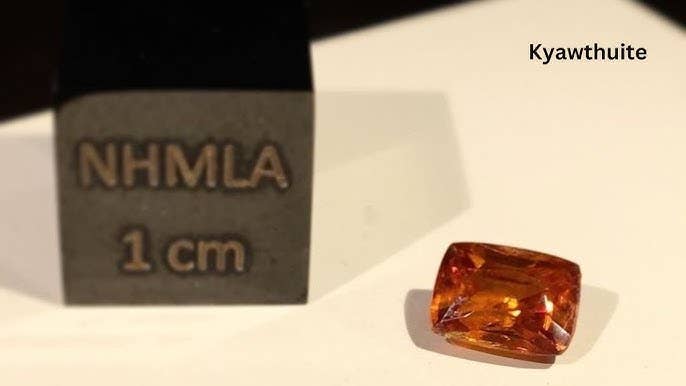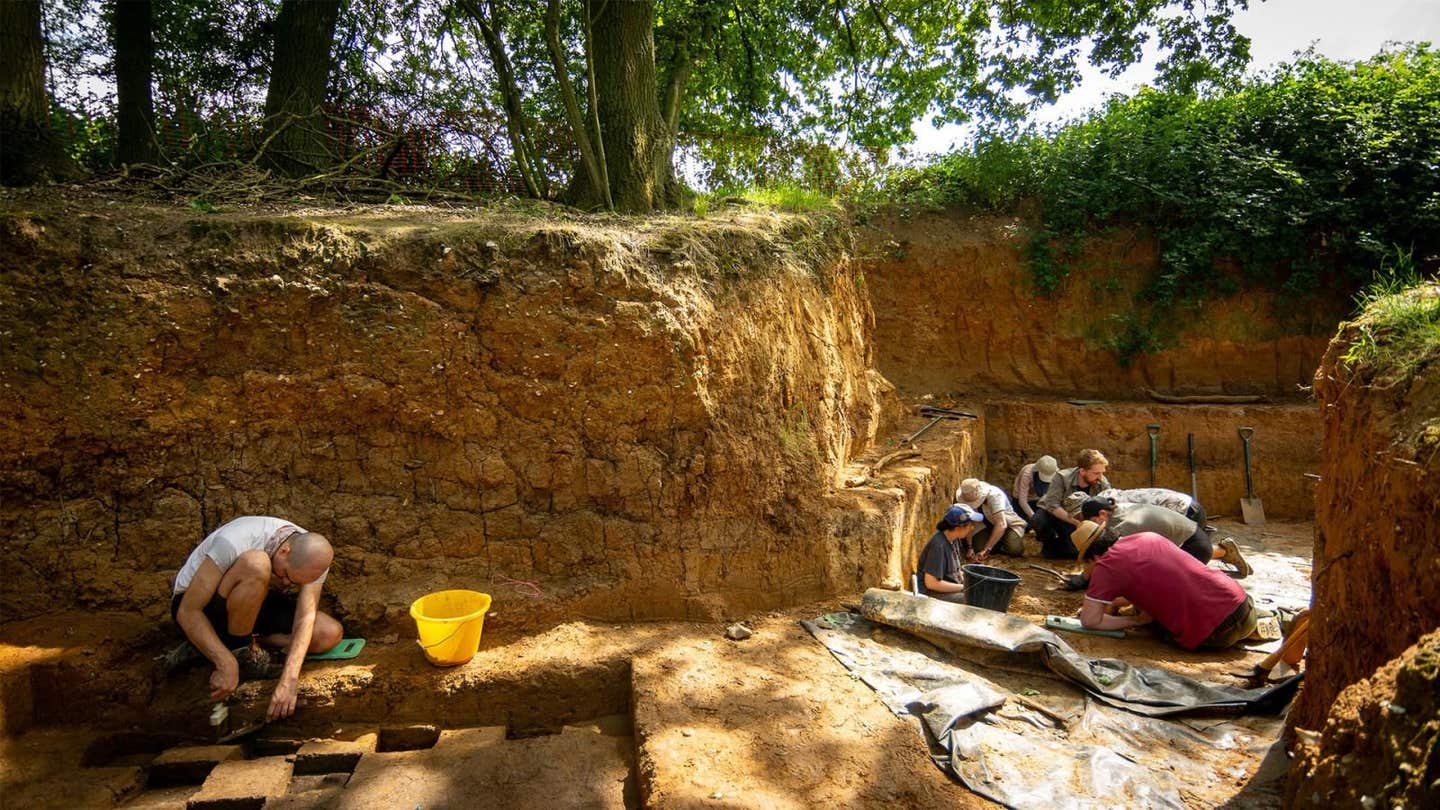Amazing mineral is so rare that only one specimen has ever been found
Meet kyawthuite, a mineral so rare that it exists in just one known specimen, a stunning gemstone unearthed near Mogok, Myanmar.

Kyawthuite. (CREDIT: Natural History Museum of LA County)
In the world of minerals, rarity often lies in the hands of humankind, crafted through ingenious processes and human ingenuity. However, there exists an exceptional exception to this rule, where nature itself has crafted a unique masterpiece.
Meet kyawthuite, a mineral so rare that it exists in just one known specimen, a stunning gemstone unearthed near Mogok, Myanmar. In 2015, the International Mineralogical Association (IMA) officially recognized this mineral, marking its place in geological history.
Kyawthuite, with its mesmerizing transparent reddish-orange hue, captivates the eyes and the imagination. The single specimen, a mere 1.61 carats in weight (approximately 0.3 grams), possesses an intriguing chemical composition: Bi3+Sb5+O4, with trace amounts of tantalum.
What sets kyawthuite apart is not the scarcity of its constituent elements—bismuth and antimony—but the extraordinary circumstances of its formation.
Bismuth and antimony, both rare metals, hold intriguing positions in the Earth's crust. While bismuth outstrips gold in terms of abundance, antimony surpasses silver. The Earth's crust is awash with oxygen, the most abundant element of all.
In the quest to understand kyawthuite's scarcity, scientists point to the unique conditions under which it was birthed, rather than any inherent shortage of its elemental ingredients.
Related Stories
The density of kyawthuite is a staggering eight times that of water, making the gemstone appear even smaller than its weight suggests. Caltech's mineral database describes its crystalline structure as consisting of checkerboard sheets of octahedra Sb5+O6, running parallel to Bi3+ atoms.
Remarkably, kyawthuite stands alone as the sole recognized bismuth-antimony oxide mineral and is named in honor of Dr. Kyaw Thu, a former geologist at Yangon University.
The tale of kyawthuite's discovery is equally captivating. This unique mineral was stumbled upon by sapphire hunters in the bed of a stream. Its significance did not go unnoticed, and in 2015, the IMA formally acknowledged kyawthuite as a distinctive mineral. Its scientific description was subsequently published in 2017, cementing its status as a geological marvel.
Interestingly, Myanmar, the birthplace of kyawthuite, also claims another gem in the world of rare minerals—the enigmatic painstone. Painstone, too, is an exceedingly scarce gem, with only a handful of known specimens in existence.
According to Caltech Professor George Rossman, the geological abundance of such gemstones in Myanmar is a consequence of the intense pressure and heat generated during the collision of India with Asia, a cataclysmic event that forged these unique geological treasures.
However, despite Myanmar's potential as a hotspot for rare minerals, decades of conflict and international sanctions have hindered the discovery and dissemination of these precious specimens to the scientific community. Many remain hidden from the world's gaze, awaiting their moment to reveal the secrets of our planet's geological history.
In a world where human innovation often defines rarity, kyawthuite stands as a testament to the Earth's ability to craft its own masterpieces. This single gemstone, with its captivating beauty and unique composition, invites us to ponder the mysteries of our planet's geological past.
As scientists continue to explore the hidden corners of the Earth, who knows what other extraordinary treasures they may unearth, waiting to captivate our imaginations and deepen our understanding of the natural world?
Note: Materials provided above by The Brighter Side of News. Content may be edited for style and length.
Like these kind of feel good stories? Get The Brighter Side of News' newsletter.



